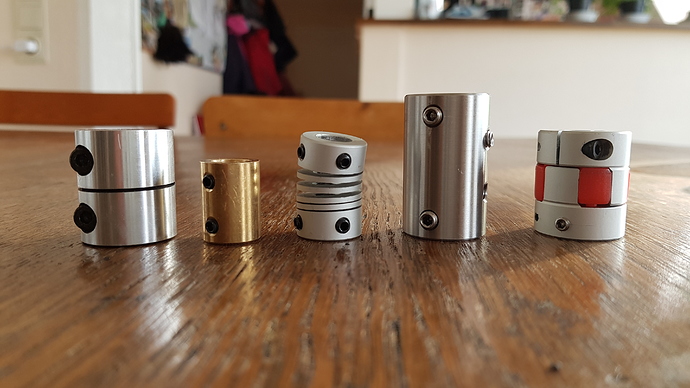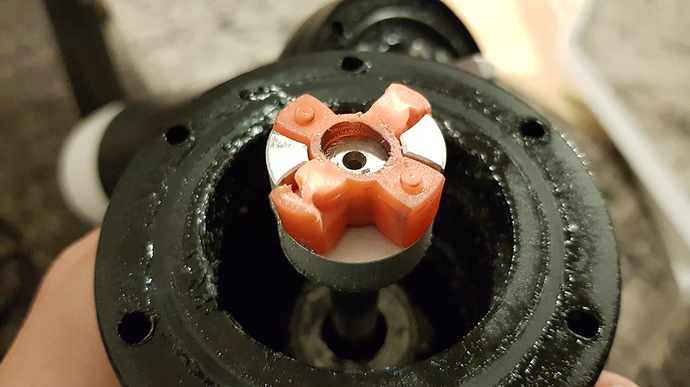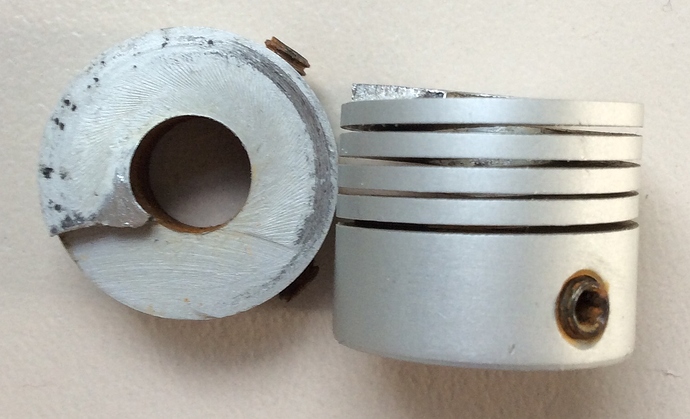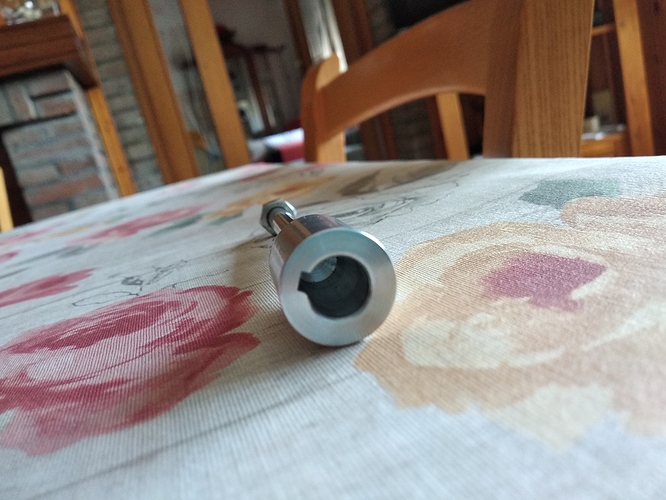That’s my coupler history (from left to right)
So which one would you recommend? I had a discussion with a friend who is a mechanical engineer with experience in that field. He recommended a clamp style coupler, not one with set screws, best would be one with 2 screws on each side for max strength, but this increases the length. Also he recommended to use two bearings on the shaft so this would match with Hiorts brothers drawing above. My friend also suggested to invest in a machined part (with a lathe) because with 3000 rpms, the shaft needs to be perfectly aligned to run true.
Straight couplers are pretty much useless. No shaft is perfectly straight. This would cause binding.
My experience with clamping only the shafts is that I had to dissamble my whole pod at the beach (like at least 3 times) because it always got loose (shaft was not clamped anymore because the torque is way too high). Even with lock tide and a high screw tightening torque it wasn’t possible.
A combination of both is in my opinion the best option. I also have an additional bearing so it’s a need for having a flexible coupling.
I recommend the jaw coupling with two threads for set screws and a shaft with a flat spot.
Update:
The Jaw Coupler failed today as well:
@Hiorth: How much torque does your setup has, roughly?
The next one I will test is this one (for max. 10Nm):
Apx 10-12nm you need a spider that can handle sufficient torque.
Can you provide a link, please?
25 x 98 shore
max torque from motor with gearbox is probably 8-10nm.
Thanks Hiorth! I didn’t expect that the coupling will be such a problem. Good ride!
Just to confirm this a second time:
As you have stated before those spiral couplings can‘t handle the torque. I used it until my elastic star coupling arrives. It failed after a few hours of testing in my jet drive with max 3.6Nm. It took only a small leaf through the impeller to finally break it.
This one can handle 15 Nm
I looked at the maedler site again this afternoon, but I will try the jaw coupling I ordered first.
Did you already test this one?
Nope. But take care that the jaw coupling will only work in forward direction if you don’t secure the shaft axial.
I´m upgrading my design to use a Ruland Jaw-coupling (25 x 98 shore spider) and two Deep Groove Ball Bearing (6200-2RSH 10mm I.D, 30mm O.D). Today I´m using an axial bearing that the gearbox-prop shaft coupling (a stiff type) pushing on.
With this new design I think it´s better for the miss alignment and vibration on the prop shaft.
But I have some questions about it. How far does it needs to be between the two bearings to get the prop shaft stable? Is it enough with 10mm?
These bearings have RSH-seals, will that be enough to skip the lip seals on the end of the shaft?
Maybe the Cage Material needs to be protected in some way?
10mm should be enough. Think we only have 5mm or so, with good results especially less noise.
You still need lip seals! As far as I can see the Rsh seals only seals the balls in the ball bearing?
Very nice @x-jets My understanding is that the Vs allow minor adjustments when facing misalignment ? Am I correct ? Wouldn’t it be too “soft” at 5000 rev/min What is the outer diameter ?
So is there a final (for now) consensus on the best coupler to use? Seems the rigid ones are near-impossible to align and the flexible ones break. And how about lubrication for the thrust needle bearing? Thanks!
Another question…on the PM build the thrust needle bearing press-fits into the thrust bearing mount. But this keeps the cage and rear washer from spinning freely. By design don’t the cage with the needle bearings and the front washer (closest to the coupler) need to spin unimpeded?





